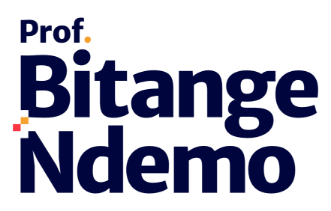This week has seen a targeted twitter attack on the Chandarana foodplus brand over a botched marketing promotion using shopping vouchers. It all began when on 27th July, 2018; Felogene Anumo (@felogene) posted on twitter a screen grab image of an internal email from the marketing specialist to the marketing/event manager. The marketing specialist was alerting her colleague about the available free gift vouchers and raffles to be issued to them. Although the value of the shopping vouchers was not clearly stated, what was clear was that these gift vouchers were to be targeted to “white” clients who were being attracted to the retail chain. This perceived racial targeting is what got Kenyan’s on twitter – and eventually other media platforms – enraged about Chandarana foodplus. The supermarket’s initial response that this perceived racial segregation was due to poor cognition of the English language by the “new” marketing employee, did not help matters as the response was also not grammatically correct. This further angered the public with questions being raised about the recruitment policies and processes of Chandarana foodplus. The public complained that the retail chain condoned the recruitment of “semi-literate” individuals at the expense of many well trained and competent marketing specialists in the Kenya. So bad was the uproar that on 29th July, 2018, the Nairobi City County governor cancelled the operating license of Chandarana foodplus.

Is this type of social media activism new in the Kenya? Are there any lessons businesses can learn from it?
Social media activism is not new in Kenya and many other countries across the globe. This led Condoleezza Rice (66th United States Secretary of State) and Amy Zegart (A security expert) from Stanford University’s Graduate School of Business to write a book on social media activism. The book, “Political Risk: How Businesses and Organizations Can Anticipate Global Insecurity” tackles the rise of social media activism and its potential effects on businesses. The authors state that “twenty-first century political risk is the probability that a political action could significantly affect a company’s business”. They identify ten types of political risks: geopolitics, internal conflict, laws and regulations, breaches of contract, corruption, extraterritorial reach, natural resource manipulation, social activism, terrorism and cyber threats. Of these, social activism seems to be the most predominant due to the fact that there are new political risk generators outside the conventional governments. These political risk generators could be at home, on the streets, in the cloud, in chat rooms (WhatsApp groups), in the board rooms, pubs or sidebars of international summits.
For businesses to be competitive, they need to manage the potential impact from the widening array of political actors. Although many of these political risks are low probability events, there is need to begin by getting the basics right. This is done by strengthening corporate “muscles” on four core competencies of the political risk framework. These are: understanding risks, analyzing risks, mitigating risks and response to risks.
Understanding Risks
To understand risks, the three key questions that should be answered are: What is the organization’s political risk appetite? Is there a shared understanding of an organization’s risk appetite? How can an organization reduce blind spots? This is because organizations risk appetite is influenced by the time horizon of major investments; availability of alternative investments, ease of exiting investments and visibility to consumers.
Consumer facing industries (hotels, supermarkets, food-chains) that are susceptible to reputation damage have a lower risk appetite compared non-consumer facing organizations (oil and gas drilling companies) that have a higher risk appetite and have to tolerate substantial political uncertainty. It is therefore imperative for organizations to make sure both the executives, line managers and workers have a common understanding of their organization’s risk appetite.
To reduce on blind spots, companies should always ask themselves, “what if we are wrong?” This is because the future will not always look like the present. Scenario planning, war-gaming exercises and other methods that can help identify hidden risks. Organizations should thus foster creative thinking while guarding against group think.
Analyzing Risks
Risk analysis begins by organizations answering three questions: How do they get information about the political risk they face? How can they ensure rigorous analysis? How can they integrate political risks into business decisions?
Organizations need to look for good information to find it. Because “analysis is how we try not to fool ourselves”; good risk analysis challenges assumptions and mental models about how risk might unfold and how to get prepared. Rigorous risk analysis is conducted by determining the most vulnerable and most valuable assets. The more these assets converge, the greater the organization’s political risk. Lastly, although only 25% of business executives integrate risk analysis into a formal process (McKinsey global survey 2016), this should be a standard practice rather than an exception. Risk analysis is therefore a “boat spotting” activity that prevents the organization from “missing the boat” and significantly improves its decision making process. Analysis of social media comments and online search trends about the company can be used to understand potential political risks.
Mitigating Risks
The three key questions to support risk mitigation are: How can organizations reduce exposure to the risks they have identified? Does the organization have a good system in place for timely warning and action? How can the organization limit damage when something bad happens?
Risk mitigation could be done through dispersing key assets, creating a surge capacity and slack in the supply chain and working with others in the industry to share political risk assessment and mitigation strategies.
Response Capability
Is the organization capitalizing on near misses? Despite the fact that all organizations want to learn from failure, few organizations learn from incidences that could have ended badly (near misses). These near misses could be signs of system vulnerabilities.
Is the organization reacting effectively to crises? The five steps of global crisis management are: assessing the situation, activating a response team, leading with values, telling your story honestly and not fanning the flames. The multiple audiences during crisis response often affect each other. These audiences could include: journalists, activists, elected officials, federal regulators and law enforcement agencies. These audiences could further generate new risks and make the situation worse. Organizations should thus manage the dynamic among the interested parties.
Is it developing mechanisms for continuous learning? The best crisis response systems institute feedback loops for learning before disasters strike. This lowers the odds that a crisis will occur and further improve the response in the event one does. A case in point is how elite football team coaches review game tapes, make midgame adjustments and reshuffle the lineups for better matches. It should be noted that organizational performance will either get better or worse, but not stay the same. Organizations should therefore assess what to keep doing, what to stop doing and what to start doing. They should also identify inspirational approaches to motivate everyone along the journey.
Because it is not possible to foresee political risk, management teams should not rely on pure guesswork. The four framework steps could thus guide political risk management activities by businesses. These effective organizations take political risks seriously, approach it systematically with humility and lead from the top. Chandarana foodplus could either adopt an in-house risk management team, outsource risk management services or use a hybrid system to learn from this marketing goof and prevent future recurrence.
By: Gerald Omondi

